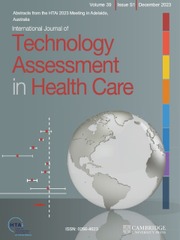No CrossRef data available.
Article contents
PP125 Why Understanding The Burden Of The Population Is Fundamental
Published online by Cambridge University Press: 14 December 2023
Abstract
Despite intense efforts in development of new treatments over the last two decades, symptomatic treatments remain the only option for the vast majority patients diagnosed with dementia due to Alzheimer’s disease (AD). There remains a significant unmet need for disease modifying therapies (DMTs) to slow or stop AD progression. DMTs in development are targeting early stages of AD (pre-clinical, mild cognitive impairment and mild dementia stages), thereby creating an entirely new treatment paradigm for patients, clinicians, and payers. A key challenge will be in identifying the appropriate patient for treatment in a very heterogenous population. We have performed a literature review to better understand and define the AD population, with a view to enabling more targeted treatment in future.
Embase, MEDLINE and the Cochrane Library were searched to identify publications between 2010-2021 on observational studies reporting evidence on prevalence and subgroup identification, including clinical feasibility of identification. The search was restricted to English language.
We identified 45 studies, mostly from Europe, USA and Asia. Populations were primarily grouped based on generic demographic factors (e.g., age, sex, gender), AD staging, comorbidities or biomarkers. Prevalence data was available for six subpopulations: pre-dementia stage, mild dementia, age, Apolipoprotein E (APOE) genotype, comorbid obesity and hypertension. Across these, data on prevalence were heterogenous depending on study design and country of origin, and ranging between 66 million to 102 million for people with mild AD dementia, or as another example, ranging between 46 million to 92 million for APOE genotype carriers worldwide.
The heterogeneity and the uncertainty in prevalence of the AD population represent big challenges to clinicians and payers. Future discussions on target patient identification for new treatments should be aligned and integrated with current clinical practice e.g. leveraging validated biomarkers as diagnostic tools. Additional research on an integrated approach to identify patients who would benefit the most from DMTs will be needed.
- Type
- Poster Presentations
- Information
- Copyright
- © The Author(s), 2023. Published by Cambridge University Press




